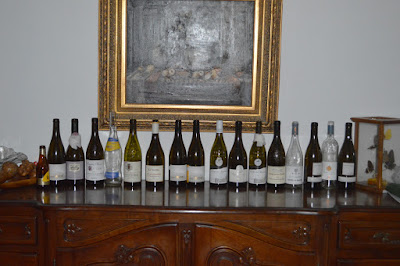Let's talk Balance in a wine. It's what really makes for a pleasant tasting experience.
In the most basic terms we are looking for a balance between the sugars and the acids in the grape. Too much sugar equals "hot" wines with high alcohol. Too much acid and you get what we call a "green pepper" taste. Both are not good.
Here is an excerpt from a website selling acids for winemakers. It's pretty technical but the point is that pH and TA levels are vital to a fine wine. It points out the importance of these elements in winemaking.
There are two ways to look at acidity in a winemaking: TA or pH:
The TA is a measure of the actual physical grams of acid in one liter of your wine and is expressed as “_ g/L of acid”, or in tenths of a percent of acidity as in “0.1% total acidity”. Both terms are equivalent and can be used interchangeably by moving the decimal point; e.g: 6.5 g/L = 0.65% TA.
The pH is a measure of how strong the acids are in relation to all of the other compounds in a wine/must. The lower the value, the more strongly acidic the sample will be; i.e: apH of 3.3 is more acidic than 3.9. In winemaking, most pH values will be between the 3.0 and 4.0 ranges, with most of the focus happening in the range of tenths between these two ends (“3._ pH”). While the TA will tell you how much physical acid there is in the wine/must, the pH tells you how this acidity will be perceived.





No comments:
Post a Comment